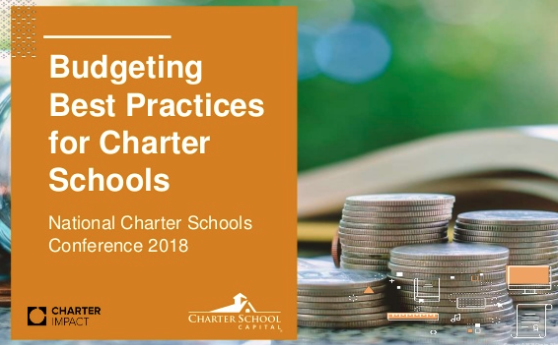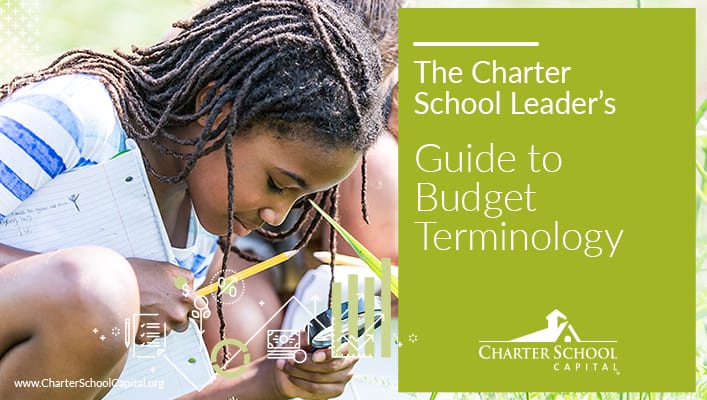Charter School Financing: Guide to Budget Terminology
Charter school financing can be one very tricky piece of managing your charter school and treating it like a business.
Does budget terminology have you confused? Understanding the complexities of your charter school budget can be a daunting task, whether your school is growing student enrollment, expanding facilities, or implementing new educational programs. But without a fundamental knowledge of at least some financial terminology, understanding the ins and outs can be even trickier. We’ve created this handy budgeting terminology guide to help you navigate through the financial landscape.
We’ve put together this handy guide to help you make sense of it all!
ACCOUNTS PAYABLE
Accounts payable is the money owed to your vendors to pay for
services or products you’ve received.
ACCOUNTS RECEIVABLE
Accounts receivable are those who need to pay you for your
offering, or the services and products you provide.
BACK OFFICE
The administrative tasks associated with running a school, including
accounting, taxes, and payroll. Can be managed by employees,
contractors, or an outsourced back office provider.
BALANCE SHEET
A worksheet with two sides that lists assets and liabilities. The right
side lists the value of what the school owes (liabilities) while the left
side lists the value of what the school owns (assets). When totaled,
the two sides should always be in balance.
BASE SALARY
A fixed amount of money paid to an employee at regular intervals
on an ongoing basis in return for work performed. Base salary
does not include benefits, off-scale awards, or any other potential
compensation from an employer.
BOTTOM LINE
This is your school’s net income. This is one of the first things
outsiders will look at to judge your school’s financial performance.
To improve your bottom line you can work on generating more
revenue, reducing expenses, or both.
BUDGET
A financial plan for the year that doesn’t change. A budget goes
through many layers of executive approval before it goes into effect.
Budgets include both costs and anticipated revenue.
BURN RATE
The burn rate measures outgoing cash flow and is based on the
amount of money your school typically spends each month. So if
you are spending $100,000 each month you’d have a burn rate of
$100,000. This rate is important for forecasting your income. If your
burn rate is larger than your expected income, or if it doesn’t leave
room for upcoming expenses, you know you need to adjust your
monthly spending.
CAPITAL
Anything a school owns that is considered a financial resource.
Everything from materials to machinery, facilities, and more can be
considered capital because they all add value to the school and its
future growth.
CASH FLOW PLANNING
An estimate of the amount of money you expect to flow in and out
of your business and includes all your projected income, expenses
and other non-income statement items that directly affect cash (i.e.
accounts receivable, accounts payable, financing). A forecast usually
covers the next 12 months, broken out either monthly or weekly.
CASH RUNWAY
A time measurement of how long your school could survive if it
stopped making money and continued spending as it is. This is
easily calculated by dividing the amount of money you have readily
available by your burn rate.
DEPRECIATION
Some assets lose value over time due to use, wear and tear, or
changes in the market. This is known as depreciation and must be
accounted for to help understand how the asset helped the school
earn revenue.
EXPENSES
Your expenses are the costs you pay to run your school such as
paying employees, vendors, rent, depreciation, etc.
FORECAST
Updated monthly or quarterly so a school knows how it will end the
year. Like a budget, forecasts also include costs and revenue; unlike
a budget, a forecast is updated throughout the year.
FIXED ASSETS
Your fixed assets are things you purchase and intend to keep for
a long time. Examples could be land or a facility, furniture, office
equipment, and some types of software.
GENERAL LEDGER
Your school’s general ledger is where all transactions get entered
(recorded, tracked, and posted) and is a useful tool for conducting
internal research/reviews, audits, and budget preparation. The
general ledger typically requires double-entry bookkeeping to
provide the most accurate financials and can be used to prepare
financial statements directly from the accounts, and as a means to
identify errors or instances of fraud.
INTEREST
Interest is the additional charge that accumulates on borrowed
money.
KNOWLEDGE CAPITAL
The intangible assets encompassing your employees’ skills,
experience, on-the-job education, and understanding of your school
and their areas of expertise. Because this asset is so specialized and
unique, it can give your school a highly valuable advantage.
LIABILITIES
The debts and obligations your school owes. These are listed on
the right side of your balance sheet including loans and mortgages,
accounts payable, expenses, and any deferred revenue. These may
sound like a bad thing, but liabilities are often essential to financing
expansions, a new facility, and operational costs.
MARGINAL ANALYSIS
As a decision-making tool, marginal analysis is the process of
weighing the benefits of adding an activity or function with the
added costs. Generally speaking, we perform marginal analysis
in our day-to-day lives, but the effects of these decisions become
much larger with an entire school at stake.
NET, NET INCOME & NET MARGIN
Net refers to a total amount after all deductions are applied
(while gross refers to a total amount before deductions). Your Net
Income is your entire income after overhead, interests, taxes, and
other deductions are taken out. Your Net Margin is a percentage
representing how much of your revenue is turned into cash
profit. This can be calculated using this formula: Net Margin (%) =
(Revenue – Operating Expenses – Interest & Taxes)/Revenue
OFF-SCALE REWARD
A fixed amount of compensation paid to an employee at one time or
over a defined interval, in addition to a salary. Examples of off-scale
awards include performance-based bonuses, extra paid time off,
revenue-based profit sharing, and temporary increases. An offscale award may change from year to year and does not affect an
individual’s base salary.
OPERATING COSTS
The expenses that relate to the function of your school such as
devices, resources, equipment, and facilities. This can include
typical ongoing overhead costs as well as variable expenses such as
materials and one-off purchases.
OPPORTUNITY COST
When you make a choice to prioritize one, you are faced with the
opportunity costs of another. For example, the opportunity costs of
a new playground may mean giving up a new auditorium. A marginal
analysis could rationalize this choice by find a greater potential
income with a new playground (which will benefit everyone and
increase curb appeal) than an teacher’s lounge (which will mostly
benefit teachers outside of class).
OVERHEAD
Your overhead consists of the general operating expenses and fees
required to run your school. When ongoing and predictable, these
costs can help you plan for the future and make smart decisions.
PROFIT & LOSS (P&L) STATEMENT
Shows your revenue, cost to operate, and expenses during any
given period of time. This is one of your most important financial
statements (along with your balance sheet and cash flow) and
provides the best view into your bottom line.
Charter School Capital helps charter schools obtain access to financing for growth so they can:
- Enrich education programs
- Expand and open new schools
- Develop new programs
- Provide technology in the classroom
- Hire and develop staff
- Improve transportation options
- Access new facilities
- Enhance facilities – with labs, gyms, etc.
- Seamlessly address budget shortfalls and delays (deferrals,
holdbacks, etc.) - Support increases in enrollment
- Finance furniture, fixtures, and equipment
WANT EVEN MORE BUDGETING INFORMATION?
To read more about these terms in their full context, download The Charter School Leader’s Definitive Guide to Budgeting Best Practices.
 Charter School Budgeting Best Practices: Don’t Just Survive–Thrive!
Charter School Budgeting Best Practices: Don’t Just Survive–Thrive!
Since the opening of Charter School Capital 10 years ago, we’ve reviewed thousands of charter school budgets. Year after year, we see common mistakes many charter schools make when budgeting for their academic year. Hear from charter school finance experts as they give you a breakdown of budgeting best practices to help you have a financially successful academic year. Don’t just survive — thrive!
